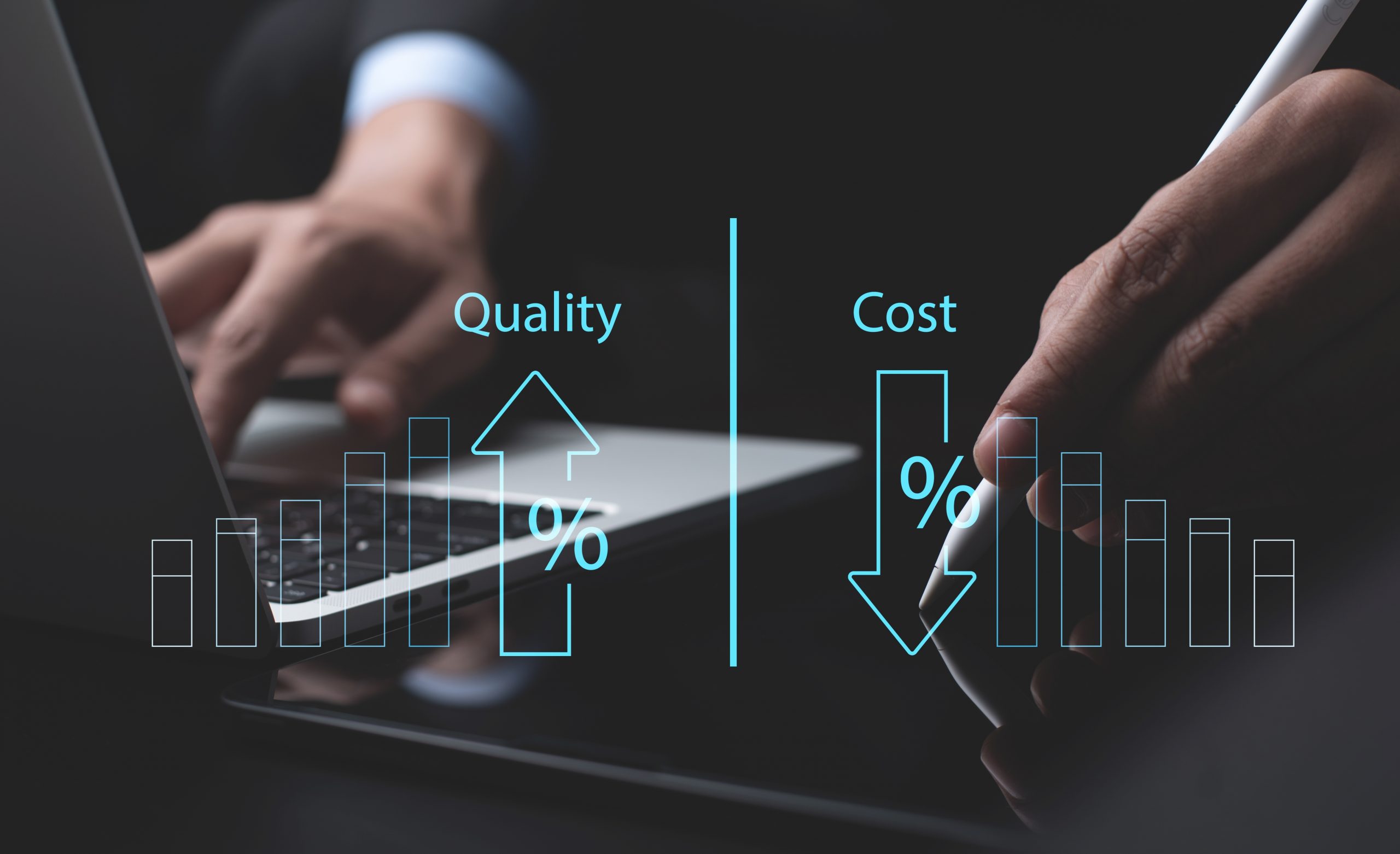Managing fixed assets efficiently is crucial for maintaining organizational health and competitiveness. It’s a big job with many moving parts to track and maintain. This guide will share ways leading companies are doing this and the challenges they face.
Before delving into the nuances of fixed asset management (FAM), let’s establish a clear understanding of what fixed assets are and their pivotal role in business operations.
Introduction to Fixed Assets
Fixed assets, also known as tangible assets, are long-term resources with a significant value that a company owns and utilizes in its operations to generate revenue. These assets typically include property, plant, equipment, machinery, vehicles, and infrastructure. According to Dokka, “Unlike current assets such as cash and accounts receivable, fixed assets are not intended for immediate sale or conversion into cash, they are rather used in the production of goods and services.” And they’re expected to provide benefits over a period of time, usually extending beyond one accounting period.
They are incredibly important to business operations, forming the backbone of production processes, facilitating the delivery of goods and services, and contributing to revenue generation. They’re the difference between being in operation or not.
The Role of Fixed Asset Management
Effective asset management throughout the asset’s lifecycle is crucial. Assets require optimal utilization, maintenance, and tracking throughout their lifecycle. Fixed asset management encompasses a comprehensive set of practices aimed at acquiring, maintaining, depreciating, and disposing of fixed assets in a manner that maximizes their value and minimizes risks.
Fixed asset management involves:
- Acquisition: Properly identifying the need for new assets, conducting feasibility studies, selecting suitable assets, negotiating contracts, and ensuring timely delivery and installation.
- Maintenance: Implementing regular maintenance scheduling using a CMMS (Computerized Maintenance Management System) or EAM (Enterprise Asset Management), conducting inspections, repairs, and upgrades to prolong asset lifespan and prevent downtime.
- Depreciation: Accurately calculating and recording asset depreciation expenses over the useful life of assets to comply with accounting standards.
- Tracking and Monitoring: Establishing robust systems for asset tracking, inventory management, and usage monitoring to prevent loss, theft, or misuse.
- Disposal: Planning and executing the disposal or sale of assets that are no longer productive or economically viable, while ensuring compliance with legal and regulatory requirements.
Effective fixed asset management has significant implications for operational efficiency and financial planning. By optimizing asset utilization and minimizing downtime through maintenance scheduling, businesses can enhance productivity, streamline operations, and more effectively meet customer demands. Moreover, accurate asset depreciation accounting enables precise financial reporting, aids in tax planning, and ensures compliance management with regulatory frameworks.
The Importance of Effective Management
Fixed asset management impacts a company’s profitability, compliance, and strategic direction.
Efficient asset utilization and maintenance directly contribute to cost savings and revenue generation. By prolonging asset lifespan, reducing repair costs, and minimizing downtime, businesses can enhance their bottom line and improve overall profitability.
Proper fixed asset management is essential for regulatory compliance management, particularly in industries with stringent reporting requirements, such as finance, healthcare, and manufacturing. And combine that with the benefits of accurate asset tracking, depreciation calculation, and financial reporting, which ensures transparency and accountability, while also mitigating the risk of penalties or legal liabilities.
Strategic asset management helps businesses align their asset investments with long-term goals and market trends. They can analyze asset performance, identify obsolete assets, and invest in modernization or expansion. This, in turn, allows companies to enhance competitiveness, seize growth opportunities, and adapt to evolving market dynamics.
Effective FAM is not merely a routine administrative task but a strategic imperative—but there are also challenges.

Challenges in Fixed Asset Management
Despite its importance, fixed asset management is not without its challenges, such as data inaccuracies, manual tracking errors, and regulatory compliance challenges.
Inaccurate or incomplete asset data can lead to misallocation of resources, improper financial reporting, and compliance violations. Manual data entry processes are prone to errors, while disparate systems may result in data silos and inconsistencies.
Relying on manual methods for asset tracking leaves room for human error, leading to discrepancies in inventory records, misplaced assets, and inefficiencies in maintenance scheduling. Without real-time visibility into asset location and status, businesses struggle to optimize asset utilization and mitigate risks.
Regulatory requirements surrounding asset depreciation, taxation, and reporting are complex and subject to frequent changes. Failure to comply with regulatory mandates can result in financial penalties, reputational damage, and legal consequences, particularly for organizations operating in heavily regulated industries.
To address these challenges, businesses must adopt best practices.
Best Practices for Fixed Asset Management
Businesses can implement a range of best practices to enhance efficiency, accuracy, and compliance and overcome the challenges inherent in fixed asset management, including:
- Digitalization: Embracing digital asset management systems allows businesses to automate asset tracking, streamline data collection, and improve visibility across the organization. Cloud-based platforms offer real-time access to asset information, enabling remote monitoring and collaboration.
- Proper Asset Tagging: Implementing a standardized asset tagging system with unique identifiers facilitates easy identification, tracking, and inventory management. Barcodes, RFID tags, or QR codes can be affixed to assets to capture essential information and streamline asset lifecycle management.
- Adopting Scalable Solutions: Investing in scalable asset management solutions that can accommodate business growth and evolving needs is crucial. Flexible software platforms with customizable features enable organizations to tailor workflows, integrate with existing systems, and adapt to changing regulatory requirements seamlessly.
By adopting these best practices, businesses can optimize their fixed asset management processes, minimize risks, and unlock new opportunities for growth and innovation.
Advantages of Fixed Asset Management Software
With the digitized business landscape becoming the norm, fixed asset management software emerges as a powerful tool for overcoming challenges and driving operational excellence. It offers many benefits for manufacturers, including cost reduction, asset optimization, and compliance benefits.
Fixed asset management software automates manual tasks, eliminates data errors, and streamlines workflows, reducing operational costs and improving resource allocation. By optimizing asset utilization and maintenance scheduling, businesses can minimize downtime and extend asset lifespan, further lowering total cost of ownership.
Real-time visibility into asset location, condition, and usage enables proactive decision-making and optimization of asset performance. By identifying underutilized or obsolete assets, businesses can effectively redeploy resources, rationalize asset investments, and improve overall operational efficiency.
And fixed asset management software ensures compliance with regulatory requirements by maintaining accurate records, facilitating audit trails, and generating comprehensive reports. Automated depreciation calculations, tax tracking features, and built-in compliance controls help mitigate risks and ensure adherence to regulatory mandates.
Overall, industry leaders have realized that fixed asset management software offers numerous advantages for businesses seeking to enhance operational efficiency, mitigate risks, and achieve regulatory compliance. And many of them have turned to CERDAAC for its comprehensive CMMS solution.
CERDAAC: A Comprehensive Solution for FAM
Success hinges on choosing the right software solution, and CERDAAC stands out as a top choice. It’s a comprehensive solution designed to address the unique challenges faced by regulated manufacturers and specifically supports FAM best practices and addresses common challenges by:
- Facilitating the digital transformation of fixed asset management processes, offering a centralized platform for asset tracking, maintenance scheduling, and compliance management.
- Automating manual tasks and streamlining workflows to enhance operational efficiency and accuracy, reducing the risk of data inaccuracies and tracking errors.
- Standardizing asset identification and improving visibility throughout an asset’s lifecycle.
- Optimizing asset utilization, preventing loss, and improving inventory management.
- Offering scalable solutions tailored to the diverse needs of businesses across industries, locations and sizes with customizable features and flexible deployment options to accommodate growth and evolving requirements.
- Maintaining accurate records, generating comprehensive reports, and enforcing compliance controls, that help businesses mitigate risks and navigate regulatory complexities with confidence.
CERDAAC is a comprehensive solution for fixed asset management, empowering businesses to overcome common challenges, achieve operational efficiency, and unlock new opportunities for growth. Businesses can streamline FAM processes, enhance compliance, and position themselves for long-term success.
Reach out for a personalized demo or FAM consultation today. We’re here to help your company become more efficient, profitable, and competitive.




